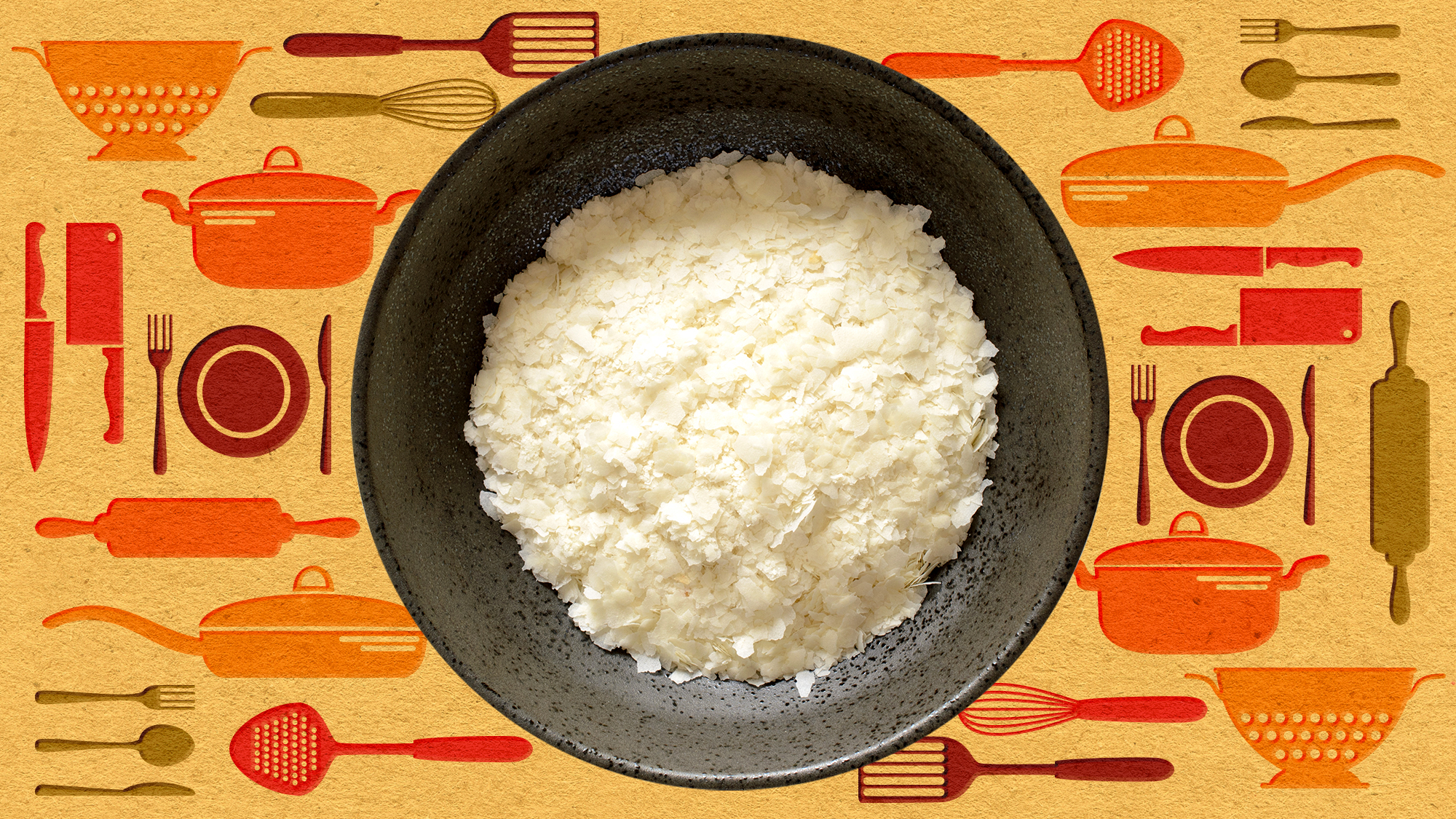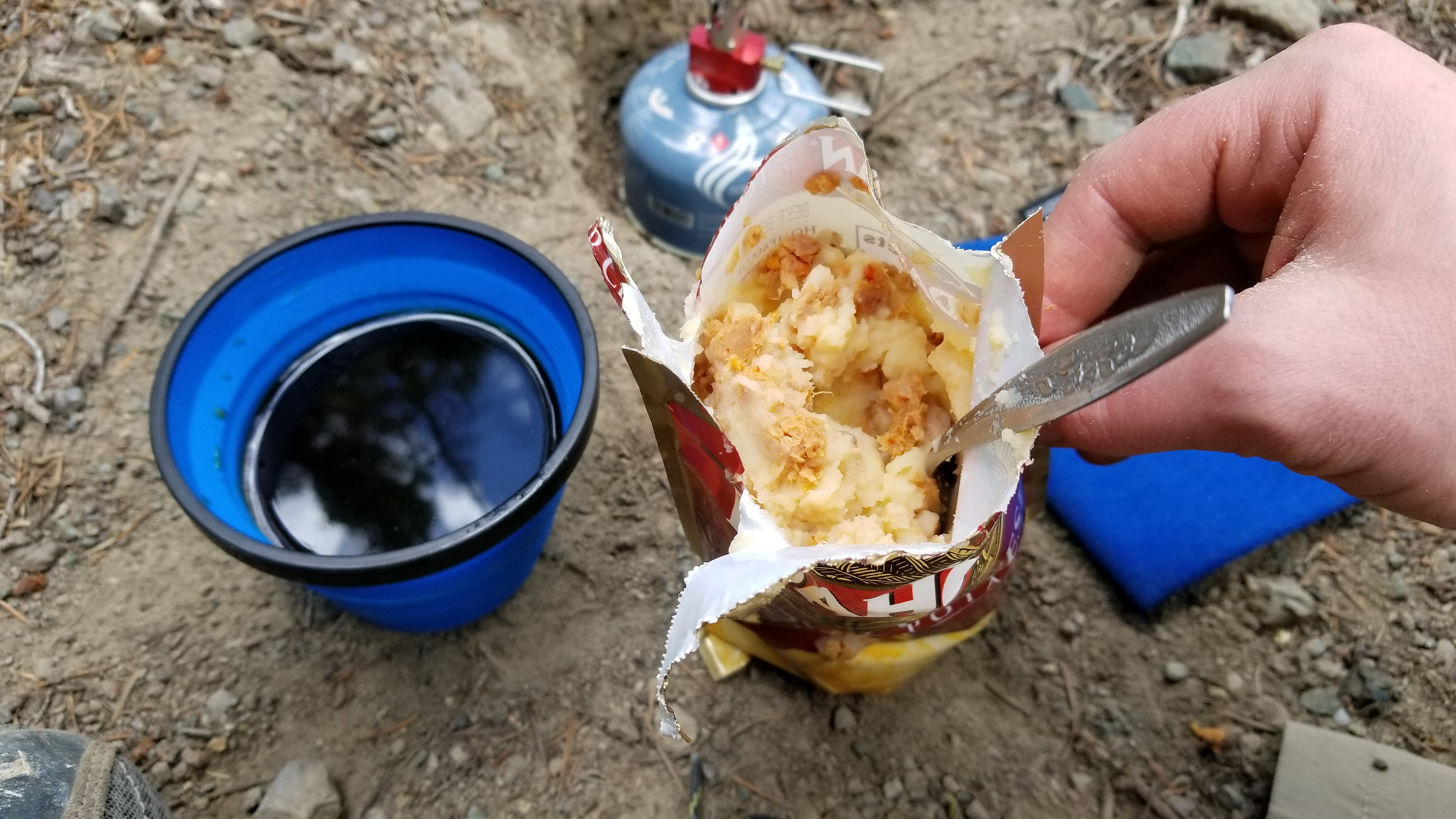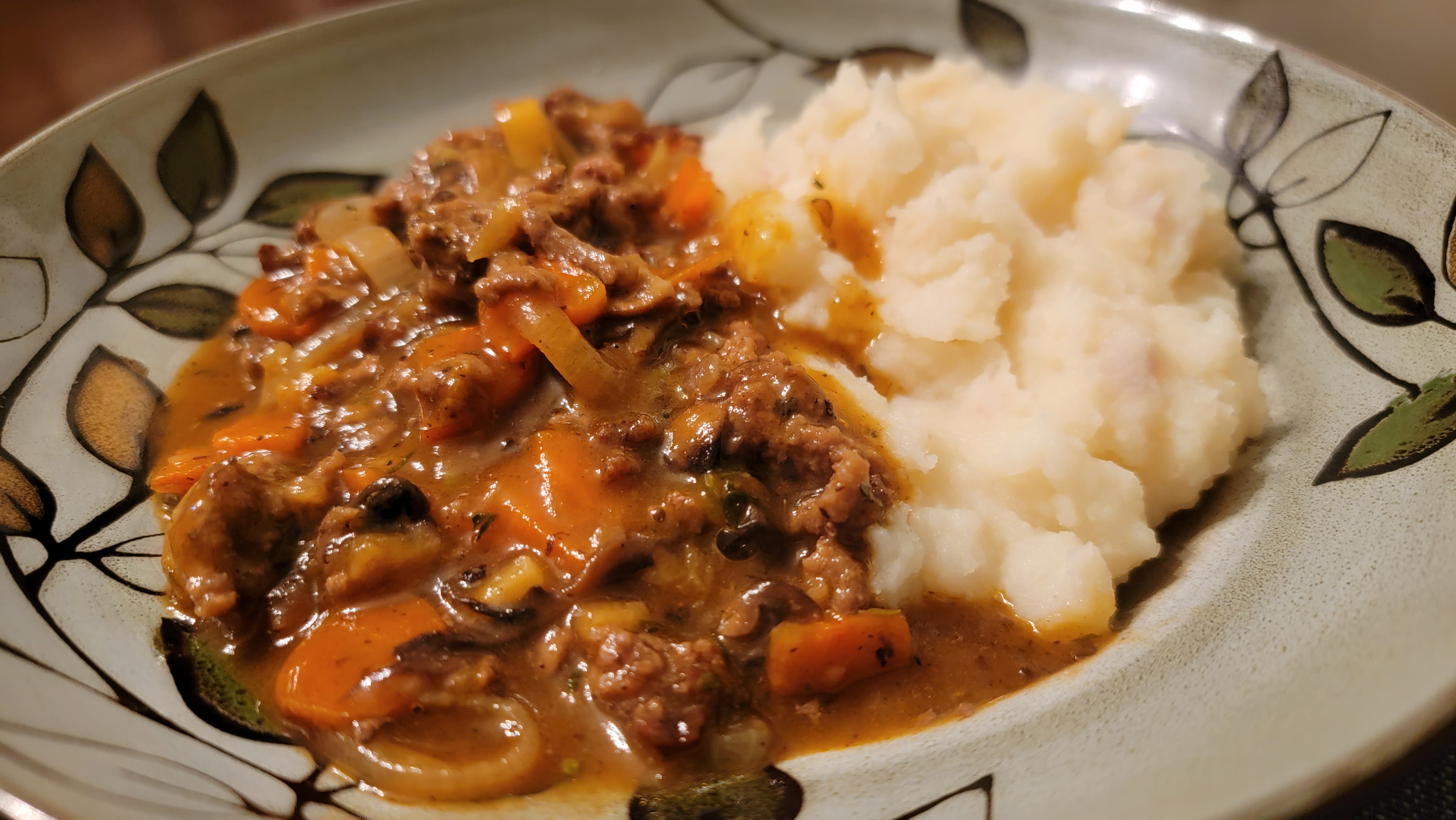The Hidden Virtues Of Instant Mashed Potatoes
A simple packet of potato flakes can unlock your freeze-dried memories.
We may receive a commission on purchases made from links.
Food was weird in the 1950s. Between the gelatin molds and casseroles, the advent of new manufacturing processes gave rise to an entire class of instant meals. And while freshness and nutrition may have suffered as a result, the questionable motives of the convenience craze brought forth an all-time side dish classic: instant mashed potatoes.
Fast forward to the era of organics and farm-to-table food, and it's easy to look down our noses at these salty, dehydrated tubers. They mix up into a mush that coats the palate like starchy oatmeal. Yet they can be a bad meal's saving grace: Who among us hasn't been subjected to the horrible triage of a poorly catered event? Every time, I thank the food gods for that metal half-pan of spuds.

I'm not alone in this fondness. Icons such as Jacques Pepin have been known to break out the potato flakes for use as a thickening agent. They can be used to add crispiness to vegetables. And let me be clear—I'm not saying that instant taters are better than the genuine article (although, depending on how your family makes them, this may be the case).
But I love potatoes in just about any form. So, let me posit a few reasons why this particular incarnation deserves a little more respect.

Potato flakes are fast and shelf-stable
In preparation for this article, I whipped up the batch of Idahoan baby reds you see above. Not counting the time to boil water, it took all of five minutes.
This seems to be par for the course with most of the instant potatoes in my cupboard. And a quick perusal of their "Best By" dates indicate that most of them will keep peak flavor for nearly two years. Of course, they're still edible for a while after that. The ones in my test were actually six months past date, and they were still perfectly tasty.
Instant potatoes can be surprisingly adventurous
In her excellent piece on backpacking food, Rachel Baron explores the current state of packable outdoor cuisine. But while many of these options are delicious, they can often be a little pricey. Entrees from Mountain House generally sell for about $10 apiece, so some thrifty backpackers consider them a treat rather than a staple.
Things like Knorr's Pasta and Rice Sides, however, can be had for around $0.99. Instant mashed potatoes cost a little more (usually between $2-3), but ramen packets are even cheaper. They all operate on the same principle: boil water, combine, and stir.
Now, I realize that these budget options are woefully deficient in nutrients. Unless you want to get backed up on the trail, you'll need to supplement your diet with some fresh produce and fiber. But have you ever mixed a packet of buffalo tuna and mashed potatoes together, then eaten the whole thing next to a 300-foot waterfall? Because I have. And trust me, as gross as that may sound, it tastes amazing after a long up-and-down hike.
They’re so damned comforting
To accompany my test batch, I cooked up a hamburger, mushroom, and onion gravy. My aim was to recreate something you'd find in a cafeteria, though some extra technique and homemade chicken stock elevated the flavors significantly. I was struck by the simple deliciousness of the stock paired with the Idahoans. Sure, I could have whipped up some Yukon Golds from scratch, like I usually do. But the point is that I didn't have to, and the end product was still memorable.
What it boils down to is this: Instant mashed potatoes have a lot to offer. They're certainly not fancy, and their effect on your digestive system is probably akin to that of a pile of salty sawdust. But the flavors come loaded with memories, both of meals past and the places in which you enjoyed them.


